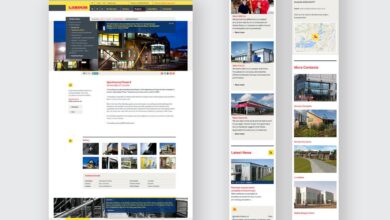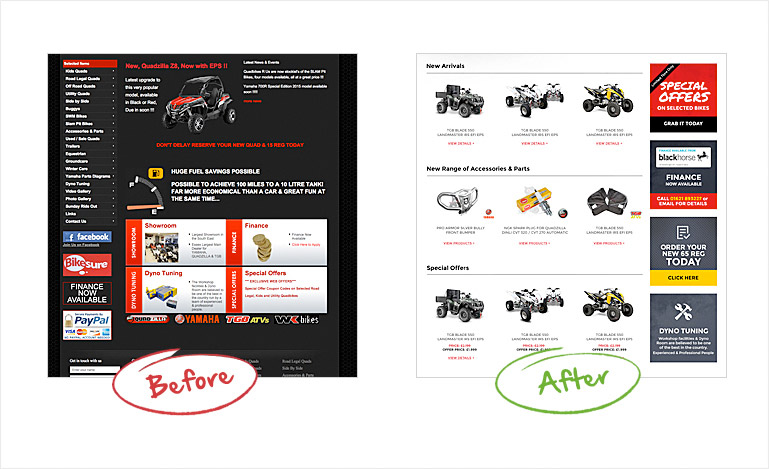
Problems in Web Design Solved
Problems in web design solved? That’s the million-dollar question, isn’t it? Building a website that’s not only visually appealing but also performs flawlessly, ranks highly in search results, and offers a stellar user experience is a constant juggling act. From sluggish load times and frustrating navigation to cross-browser compatibility nightmares and security vulnerabilities, the challenges are numerous.
But fear not! This post dives deep into common web design problems and offers practical, actionable solutions to help you create a website that truly shines.
We’ll tackle everything from optimizing images for speed and implementing responsive design to mastering techniques and securing your site against threats. We’ll even explore the nuances of user experience (UX) design and how to create an intuitive and accessible website for everyone. Get ready to transform your website from a source of frustration into a digital masterpiece!
Website Performance Issues: Problems In Web Design Solved
Slow website loading times are a major frustration for users and can significantly impact your website’s success. A slow site leads to higher bounce rates, lower conversion rates, and a poor user experience, ultimately hurting your search engine rankings. Addressing performance issues is crucial for any website aiming for growth and sustainability.
Common Causes of Slow Loading Times and Solutions
Several factors contribute to slow website loading. These include large image files, inefficient code, slow server response times, and a lack of caching mechanisms. Optimizing these areas can dramatically improve your website’s speed. For example, a poorly optimized WordPress site with large images and many plugins can take several seconds to load, while a well-optimized site might load in under a second.
This difference can be the deciding factor in whether a user stays or leaves. Solutions involve compressing images, minifying CSS and JavaScript files, leveraging browser caching, and choosing a reliable hosting provider with sufficient resources. Employing a content delivery network (CDN) can also distribute your content across multiple servers, significantly reducing loading times for users in different geographical locations.
Image Optimization Techniques
Images often represent a significant portion of a website’s overall size. Optimizing them is essential for improved performance. Techniques include using appropriate image formats (WebP offers superior compression compared to JPEG or PNG), reducing image dimensions to the necessary size, and employing lossy compression to reduce file size without significant visual quality loss. Tools like TinyPNG or ImageOptim can automate this process, significantly reducing image file sizes.
For instance, a high-resolution image might be 2MB, but after optimization, it could be reduced to 200KB, significantly speeding up loading times without a noticeable difference in visual quality. Furthermore, using responsive images that adapt to different screen sizes prevents loading unnecessarily large images on smaller devices.
Content Delivery Network (CDN) Comparison
Choosing the right CDN is crucial for optimizing website performance. The table below compares some popular CDNs and their key features. Consider factors like pricing, geographic coverage, and specific features when making your selection.
| CDN Provider | Geographic Coverage | Key Features | Pricing |
|---|---|---|---|
| Cloudflare | Global | High performance, security features (DDoS protection), caching, image optimization | Free and paid plans |
| Amazon CloudFront | Global | Integration with AWS services, high scalability, edge locations worldwide | Pay-as-you-go |
| Akamai | Global | Extensive global reach, advanced security features, media delivery optimization | Enterprise-level pricing |
| Fastly | Global | High performance, focus on developer experience, strong security features | Pay-as-you-go |
User Experience (UX) Problems
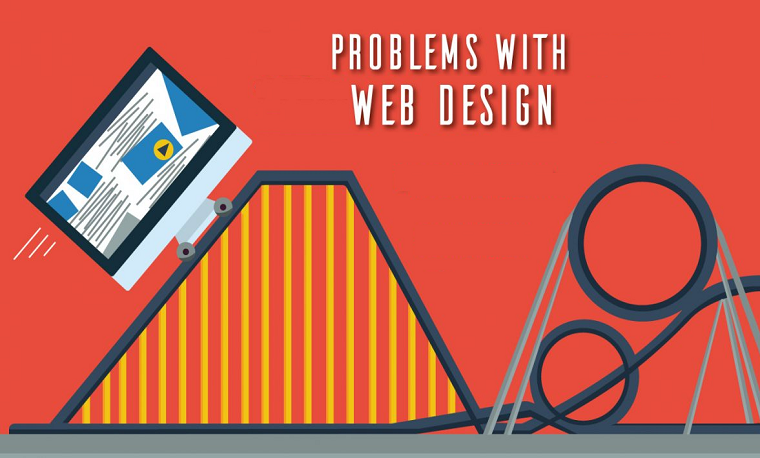
Source: designdrizzle.com
A website’s success hinges not just on its technical prowess but also on its user experience. A poorly designed website, no matter how fast it loads, will frustrate visitors and drive them away. Focusing on UX is crucial for boosting engagement, conversions, and ultimately, your bottom line. This section delves into common UX issues and offers solutions to create a seamless and enjoyable user journey.
Intuitive Navigation Menus and Sitemaps
Effective navigation is paramount for a positive user experience. A well-structured menu and sitemap allow users to easily find the information they need without getting lost. Best practices include using clear and concise labels, employing a logical hierarchical structure (main categories, subcategories, etc.), and ensuring consistent placement of the navigation menu across all pages. Consider using visual cues like icons or breadcrumbs to enhance navigation clarity.
For example, a site selling clothing might use categories like “Women’s,” “Men’s,” and “Accessories,” each leading to further subcategories like “Dresses,” “Shirts,” and “Jewelry.” A clear sitemap, perhaps presented as a visual chart or a text-based Artikel, would further aid users in understanding the site’s structure and finding specific pages.
Clear Call-to-Actions
Call-to-actions (CTAs) are the crucial elements that guide users towards desired actions, such as making a purchase, signing up for a newsletter, or contacting support. Effective CTAs are concise, visually prominent, and use action-oriented language. Examples include “Shop Now,” “Learn More,” “Get Started,” or “Contact Us.” The design of a CTA should also be considered; using contrasting colors, clear button shapes, and strategic placement (above the fold, near relevant content) will increase their effectiveness.
For instance, a vibrant green “Buy Now” button against a white background will immediately capture the user’s attention. Poorly designed CTAs, on the other hand, such as small, indistinct text links, often get overlooked.
Accessibility Principles and Inclusive Website Design
Designing inclusive websites ensures that everyone, regardless of their abilities, can access and use your website. This includes considering users with visual, auditory, motor, or cognitive impairments. Key accessibility principles involve providing alternative text for images (alt text), using sufficient color contrast, ensuring keyboard navigation, providing captions for videos, and structuring content logically using headings and semantic HTML.
For example, alt text for an image of a product would describe the product’s features and benefits. Failing to adhere to accessibility guidelines not only limits your audience but also can lead to legal repercussions in some jurisdictions.
Techniques to Improve Website Usability
Improving website usability involves a multifaceted approach focusing on user needs and behaviors. Here are some key techniques:
- Conduct User Testing: Observe real users interacting with your website to identify pain points and areas for improvement.
- Optimize for Mobile Devices: Ensure your website is responsive and adapts seamlessly to different screen sizes.
- Use Consistent Design Elements: Maintain a consistent visual style and layout across all pages for a cohesive user experience.
- Minimize Clutter: Avoid overwhelming users with excessive text, images, or interactive elements.
- Provide Clear and Concise Content: Use simple language and avoid jargon. Break up large blocks of text with headings, subheadings, and bullet points.
- Implement a Search Function: Allow users to easily find specific information using a search bar.
- Use Error Prevention Techniques: Design forms and input fields to prevent errors and provide clear feedback.
Responsive Design Challenges
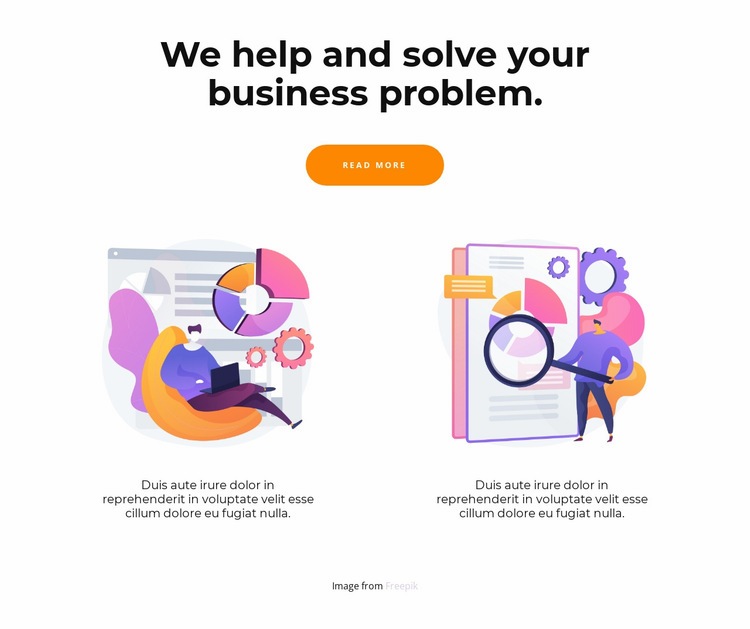
Source: nicepagecdn.com
Creating websites that look great and function flawlessly on every device, from tiny smartphones to massive desktop monitors, is a significant hurdle in modern web design. The challenge lies in balancing the need for a consistent user experience with the vast differences in screen sizes, resolutions, and input methods. Ignoring responsive design can lead to frustrated users, lost conversions, and a damaged brand reputation.
The core problem stems from the sheer diversity of devices and browsers. A layout that works perfectly on a high-resolution desktop might be unreadable on a small phone screen. Similarly, navigation designed for a mouse cursor might be awkward to use with a touchscreen. Successfully navigating these complexities requires a deep understanding of various screen sizes, different input mechanisms, and the clever use of CSS techniques to dynamically adapt the website’s layout.
Common Responsive Design Issues
Several common issues plague responsive design implementations. Poorly implemented responsiveness can manifest in various ways, leading to a suboptimal user experience. These issues can range from simple layout problems to more complex issues with functionality and accessibility.
- Layout Breakdowns: Images and text overflowing their containers, navigation menus collapsing, and overall visual disarray are common occurrences when not properly addressing different screen sizes.
- Inconsistent Navigation: Menus that are easy to use on a desktop might be cumbersome or even unusable on a mobile device. This necessitates a carefully considered navigation strategy for different contexts.
- Poor Readability: Small text sizes on larger screens and overly large text on smaller screens are common readability problems. Adaptive font sizes are crucial to address this.
- Slow Loading Times: Responsive design often involves loading different assets for different devices. Failure to optimize these assets can result in significant performance degradation, especially on mobile devices.
- Lack of Touch Optimization: Websites designed primarily for mouse interaction can be difficult and frustrating to use on touchscreens. Interactive elements need to be appropriately sized and spaced for touch input.
Solutions for Consistent User Experience
Addressing the challenges of responsive design requires a multi-pronged approach. By implementing several key strategies, developers can create websites that provide a consistently positive user experience across all devices.
- Mobile-First Approach: Designing for the smallest screen first ensures a solid foundation for scaling up to larger screens. This approach simplifies the process and helps prioritize essential content.
- Flexible Grid Systems: Using flexible grid systems allows elements to rearrange themselves seamlessly as the screen size changes, maintaining a clean and organized layout.
- Responsive Images: Optimizing images for different screen sizes and resolutions prevents unnecessary data transfer and improves loading times on mobile devices.
- Touch-Friendly Interactions: Ensuring that interactive elements are large enough and spaced appropriately for touch input is crucial for usability on mobile devices.
- Thorough Testing: Testing on a wide range of devices and browsers is essential to identify and address any inconsistencies in the responsive design.
Using Media Queries for Layout Adaptation
Media queries are the cornerstone of responsive web design. They allow you to apply different styles based on the device’s characteristics, such as screen width, resolution, and orientation. This enables the creation of dynamic layouts that adjust to different screen sizes seamlessly.
For example, a simple media query to apply different styles for screens smaller than 768 pixels wide would look like this:
@media (max-width: 768px) /* Styles for screens smaller than 768px – / body font-size: 14px; #navigation display: block; /* Make navigation vertical – /
This code snippet demonstrates how to adjust font size and navigation layout for smaller screens. More complex layouts might require multiple media queries targeting different breakpoints.
Comparison of Responsive Design Frameworks
Several frameworks simplify the process of building responsive websites. Each has its strengths and weaknesses, making the choice dependent on project needs and developer preferences.
| Framework | Pros | Cons |
|---|---|---|
| Bootstrap | Large community, extensive documentation, pre-built components | Can be bulky, requires learning its specific conventions |
| Tailwind CSS | Highly customizable, utility-first approach, efficient | Steeper learning curve initially, can lead to verbose code if not used carefully |
| Foundation | Robust grid system, extensive features, good documentation | Can be more complex than Bootstrap for smaller projects |
Cross-Browser Compatibility Problems
Ensuring a consistent website experience across different browsers is a significant challenge for web developers. The variations in rendering engines, interpretations of CSS and HTML standards, and JavaScript implementations lead to inconsistencies in how websites appear and function. These inconsistencies can range from minor visual differences to complete website malfunctions, negatively impacting user experience and potentially hindering business goals.The inherent differences between browsers stem from their distinct rendering engines and how they interpret web standards.
For instance, a website that looks perfect in Chrome might display broken layouts or incorrect styling in Internet Explorer or Firefox. This stems from discrepancies in how these browsers parse and render CSS, handle JavaScript, and interpret HTML elements. Moreover, different browser versions can also exhibit different behaviors, adding another layer of complexity to cross-browser compatibility.
Debugging Cross-Browser Compatibility Issues
Debugging cross-browser issues requires a systematic approach. Begin by identifying the affected browsers and versions. Use browser developer tools (available in most modern browsers) to inspect the rendered HTML, CSS, and JavaScript. These tools allow you to pinpoint discrepancies in how elements are rendered, track down JavaScript errors, and examine network requests. Comparing the rendered output across browsers often reveals the source of the problem.
For example, you might find that a specific CSS rule is interpreted differently, leading to layout discrepancies. Online tools and browser compatibility testing services can also be invaluable, automating the testing process across a wider range of browsers and devices.
Best Practices for Cross-Browser Compatible Code
Writing clean and compatible code is crucial for mitigating cross-browser issues. Prioritize using widely supported CSS properties and HTML elements, avoiding proprietary vendor prefixes where possible. For example, instead of relying on `-webkit-`, `-moz-`, or `-ms-` prefixes for CSS properties, use the standard CSS properties whenever feasible. Modern browsers generally support these standards. When vendor prefixes are necessary for specific features, use a CSS preprocessor like Sass or Less to manage these prefixes efficiently.Furthermore, validate your HTML and CSS code using online validators.
This helps identify syntax errors and potential compatibility issues before they become significant problems. Regularly testing your website on different browsers and devices is essential. Automated testing frameworks and services can significantly streamline this process, ensuring early detection and resolution of compatibility problems. Remember to thoroughly test across various screen sizes and resolutions for optimal responsiveness.
Always validate your HTML and CSS. This simple step can prevent many headaches later.
Utilizing CSS Reset and Normalization
Before writing any custom CSS, using a CSS reset or normalization stylesheet is highly beneficial. A CSS reset aims to strip default browser styling, providing a consistent baseline across browsers. A normalization stylesheet, on the other hand, aims to normalize differences in default styles, providing a more consistent yet semantically meaningful styling baseline. Both techniques help ensure predictable rendering across browsers, simplifying the development process and reducing compatibility issues.
The choice between a reset and normalization depends on project needs and preference.
Search Engine Optimization () Issues (Focus on Technical Aspects)
Optimizing your website for search engines is crucial for attracting organic traffic. Technical , focusing on the behind-the-scenes aspects of your site, plays a vital role in this process. Ignoring technical can severely limit your website’s visibility, regardless of how compelling your content is. This section will delve into some key technical elements.
Structured Data Markup with Schema.org
Implementing structured data markup using Schema.org vocabulary helps search engines understand your website’s content more effectively. This leads to richer snippets in search results, potentially increasing click-through rates. Schema.org provides a standardized vocabulary of tags that you can add to your HTML to describe the content on your pages. For example, using the `Product` schema type on an e-commerce product page allows Google to display the product’s name, price, and image directly in the search results, making it more appealing to users.
Properly implemented structured data also allows for features like rich card display and enhanced knowledge graph integration. This improves visibility and can positively impact click-through rates from search results. Remember to validate your structured data using Google’s Rich Results Test tool to ensure it’s correctly implemented.
Optimizing Website URLs for
Well-structured URLs are essential for both user experience and search engine optimization. URLs should be concise, descriptive, and relevant to the page’s content. Avoid using long, confusing URLs filled with numbers and session IDs. Instead, opt for short, -rich URLs that clearly indicate the page’s topic. For example, `/best-running-shoes-2024/` is far better than `/product.php?id=12345&category=shoes`.
Using hyphens to separate words improves readability for both users and search engines. Consistent URL structure across your website contributes to a better user experience and improved crawlability by search engine bots. A logical URL structure also aids in internal linking, further boosting .
Tackling frustrating web design problems is a constant learning curve, and sometimes you need a break! That’s where I found a fantastic resource, getting it on with youtube , to refresh my perspective. After watching some videos on effective YouTube strategies, I returned to my web design projects with renewed energy and found innovative solutions to those pesky issues I’d been stuck on.
Website Sitemap Formats, Problems in web design solved
Sitemaps are crucial for helping search engines discover and index all the pages on your website. Different formats cater to various needs. Below is a comparison of some popular sitemap formats:
| Sitemap Format | Benefits |
|---|---|
| XML Sitemap | Widely supported by search engines; ideal for large websites; allows specification of last modification date and change frequency. |
| HTML Sitemap | Easy for users to navigate; beneficial for smaller websites; improves site usability and internal linking. |
| Text Sitemap | Simple format; suitable for smaller websites; less feature-rich than XML sitemaps. |
| Image Sitemap | Specifically for indexing images; allows specifying image location, caption, and title. |
| Video Sitemap | Designed for indexing videos; allows providing metadata like title, description, and thumbnail. |
Security Vulnerabilities
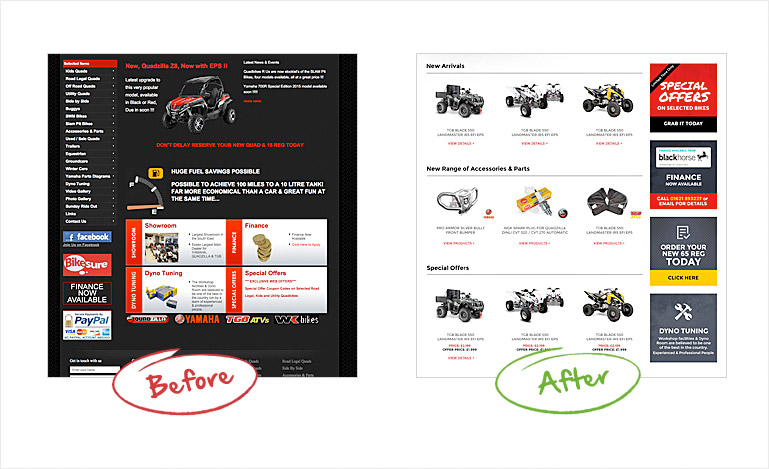
Source: mandmwebsolutions.com
Website security is paramount; a breach can lead to significant financial losses, reputational damage, and legal repercussions. Ignoring security best practices is simply not an option in today’s digital landscape. This section Artikels common vulnerabilities and mitigation strategies.
Common Web Security Vulnerabilities and Mitigation
Several vulnerabilities can compromise a website’s security. SQL injection, cross-site scripting (XSS), and cross-site request forgery (CSRF) are among the most prevalent. SQL injection attacks attempt to manipulate database queries to gain unauthorized access to data. XSS attacks inject malicious scripts into websites, often stealing user cookies or redirecting users to phishing sites. CSRF attacks trick users into performing unwanted actions on a website they’re already authenticated to.
Effective mitigation involves input validation and sanitization, parameterized queries (to prevent SQL injection), output encoding (to prevent XSS), and the use of CSRF tokens. Regular security audits and penetration testing are also crucial for identifying and addressing vulnerabilities before attackers exploit them.
HTTPS Implementation for Secure Connections
HTTPS (Hypertext Transfer Protocol Secure) is essential for securing communication between a web server and a client. It encrypts data transmitted over the internet, protecting sensitive information like passwords and credit card details from eavesdropping. Implementing HTTPS involves obtaining an SSL/TLS certificate from a trusted Certificate Authority (CA). This certificate digitally binds a public key to your website’s domain, allowing browsers to verify the authenticity of the server.
Proper configuration of the web server, including the use of strong cipher suites, is also crucial. A properly configured HTTPS connection will display a padlock icon in the browser’s address bar, reassuring users of a secure connection. For example, a website using Let’s Encrypt, a free, automated, and open certificate authority, demonstrates a commitment to security.
Protecting User Data and Preventing Data Breaches
Protecting user data requires a multi-layered approach. This includes implementing robust access control mechanisms to restrict access to sensitive information based on user roles and permissions. Data encryption, both in transit (using HTTPS) and at rest (using database encryption), is critical to protect data even if a breach occurs. Regular backups of data are essential for recovery in case of a data loss event.
Furthermore, a comprehensive incident response plan should be in place to handle security incidents effectively and minimize damage. This plan should include procedures for identifying, containing, eradicating, recovering from, and learning from security breaches. For instance, a well-defined incident response plan might involve notifying affected users promptly in the event of a data breach, complying with relevant data protection regulations (like GDPR or CCPA), and collaborating with law enforcement if necessary.
The implementation of strong password policies and multi-factor authentication further enhances user data protection.
Content Management System (CMS) Related Problems
Choosing the right Content Management System (CMS) is crucial for a website’s success, but even the best platforms can present challenges. From performance bottlenecks to security vulnerabilities, CMS-related issues can significantly impact user experience and overall website health. Understanding these common problems and implementing effective solutions is key to maintaining a robust and efficient online presence.
Many websites rely on CMS platforms like WordPress, Drupal, Joomla, and others to manage their content. While these systems offer ease of use and powerful features, they also introduce a unique set of potential problems. These issues often stem from a combination of factors including poorly optimized code, insufficient security measures, inadequate content management practices, and the sheer volume of data handled by the system.
Common CMS Performance Issues
Performance problems are a frequent headache for website owners using CMS platforms. Slow loading times, database inefficiencies, and poorly optimized themes or plugins can severely impact user experience and search engine rankings. For example, a WordPress site overloaded with poorly coded plugins might experience significant delays in page load times, leading to high bounce rates and frustrated users. This is often exacerbated by a lack of caching mechanisms, which means the server has to generate the entire page each time a user requests it.
Optimizing CMS Performance
Several strategies can improve CMS performance. Regular updates are essential to patch security vulnerabilities and leverage performance enhancements included in new versions. Optimizing database queries, using caching plugins (like WP Super Cache for WordPress or similar solutions for other CMS platforms), and employing a Content Delivery Network (CDN) to distribute content geographically can significantly reduce loading times. Furthermore, choosing lightweight themes and plugins, and regularly removing unused plugins, reduces the overall strain on the server.
For instance, a poorly optimized WordPress theme with excessive JavaScript and CSS can dramatically increase page load time.
CMS Security Vulnerabilities
Security is paramount for any website, and CMS platforms are frequent targets for attacks. Outdated software, weak passwords, and insecure plugins are common entry points for malicious actors. A compromised CMS can lead to data breaches, website defacement, or even complete system failure. For example, a WordPress site running an outdated version might be vulnerable to known exploits, allowing hackers to gain unauthorized access.
Improving CMS Security
Strengthening CMS security requires a multi-faceted approach. Regular updates are crucial to patch known vulnerabilities. Using strong, unique passwords and enabling two-factor authentication adds another layer of protection. Regular security audits can identify potential weaknesses. Choosing reputable plugins and themes from trusted sources minimizes the risk of introducing malicious code.
Implementing a web application firewall (WAF) can help block malicious traffic before it reaches the server. Regular backups are also critical for data recovery in case of an attack.
Effective Content Management within a CMS
Effective content management is vital for maintaining a well-organized and easily updatable website. A clear content strategy, with well-defined categories and tags, makes it easier to find and manage content. Using a consistent content style guide ensures uniformity across the website. Implementing a workflow for content creation, review, and publication ensures quality control and efficient content updates.
Regularly reviewing and updating existing content keeps the website fresh and relevant. For example, using a structured approach to categorize blog posts in WordPress makes it easier for both users and search engines to navigate the content.
Visual Design Flaws
A website’s visual design is crucial for user experience. Poor visual design can lead to confusion, frustration, and ultimately, a loss of potential customers. Even with perfect functionality, an unattractive or poorly organized website will struggle to engage users. This section explores common visual design flaws and how to avoid them.
Color Palette Problems
Inappropriate color choices significantly impact a website’s usability and aesthetic appeal. Using clashing colors can create a jarring and unprofessional look, while an overly bright or saturated palette can cause eye strain and fatigue. Conversely, a dull or monotonous palette can make the site appear boring and uninviting. For example, a website selling luxury goods might use a sophisticated color scheme of deep blues and golds, whereas a children’s toy website might opt for bright, playful colors.
The key is to choose colors that align with the brand’s identity and target audience, ensuring readability and visual harmony. Consider using color contrast checkers to ensure sufficient contrast between text and background for accessibility.
Typography Issues
Typography plays a vital role in website readability and overall aesthetic. Using inappropriate font choices, sizes, or styles can hinder user comprehension and create a disorganized appearance. For instance, using overly decorative or hard-to-read fonts can make text difficult to scan and understand. Inconsistent font usage throughout the site also detracts from professionalism. A well-designed website utilizes a limited number of fonts—typically one or two—carefully chosen for their readability and compatibility with the overall design.
Font sizes should be appropriately scaled for different screen sizes and content types, with headings clearly differentiated from body text.
Effective Visual Hierarchy and Layout Techniques
Visual hierarchy guides the user’s eye through the website’s content, ensuring important information is easily noticed. This is achieved through strategic use of size, color, contrast, and whitespace. For example, larger headings and bold text draw attention to key information, while strategic use of whitespace creates visual breathing room and improves readability. A clear and logical layout ensures easy navigation and intuitive information discovery.
Employing grid systems or modular designs helps maintain consistency and order across the website. This ensures a professional and visually appealing presentation of content.
Example of a Well-Designed Homepage
Imagine a homepage for a minimalist fashion brand. The background is a clean, off-white color. At the top, a simple, elegant logo is centered, followed by a large, high-quality image showcasing the brand’s latest collection. This image occupies about half the screen, showcasing a single, stylish garment. Below the image, a concise tagline appears in a sophisticated serif font, followed by a clear call to action, such as “Shop Now,” in a contrasting, bolder sans-serif font.
Further down, smaller images showcase different product categories, neatly arranged in a grid layout. Each category image is accompanied by a short, descriptive text in a smaller, yet still readable, font size. Finally, the footer contains essential links like “About Us,” “Contact,” and “Privacy Policy,” presented in a consistent, uncluttered style. The overall design is clean, sophisticated, and visually appealing, with a clear hierarchy that guides the user’s eye smoothly through the page’s content.
The color palette is limited to a few well-chosen neutrals with subtle pops of the brand’s signature color, creating a harmonious and memorable visual experience.
Concluding Remarks
Creating a successful website involves navigating a complex landscape of technical challenges and design considerations. Hopefully, this exploration of common problems in web design solved has equipped you with the knowledge and strategies to overcome those hurdles. Remember, continuous learning and adaptation are key in this ever-evolving digital world. By focusing on performance, user experience, and security, you can build a website that not only meets but exceeds expectations, driving engagement and achieving your online goals.
So go forth and build something amazing!
Questions Often Asked
What’s the best way to choose a color palette for my website?
Consider your brand identity, target audience, and the overall mood you want to create. Use color psychology to your advantage and test different palettes to see what resonates best with your users.
How can I improve my website’s without using expensive plugins?
Focus on creating high-quality, -rich content. Optimize your website’s structure, ensure fast loading times, and build high-quality backlinks. Free tools can assist with research and site audits.
My website looks different in different browsers. What’s wrong?
This often points to inconsistencies in your CSS or HTML code. Use browser developer tools to identify and debug the specific issues. Ensure you’re using well-supported CSS properties and coding standards.

